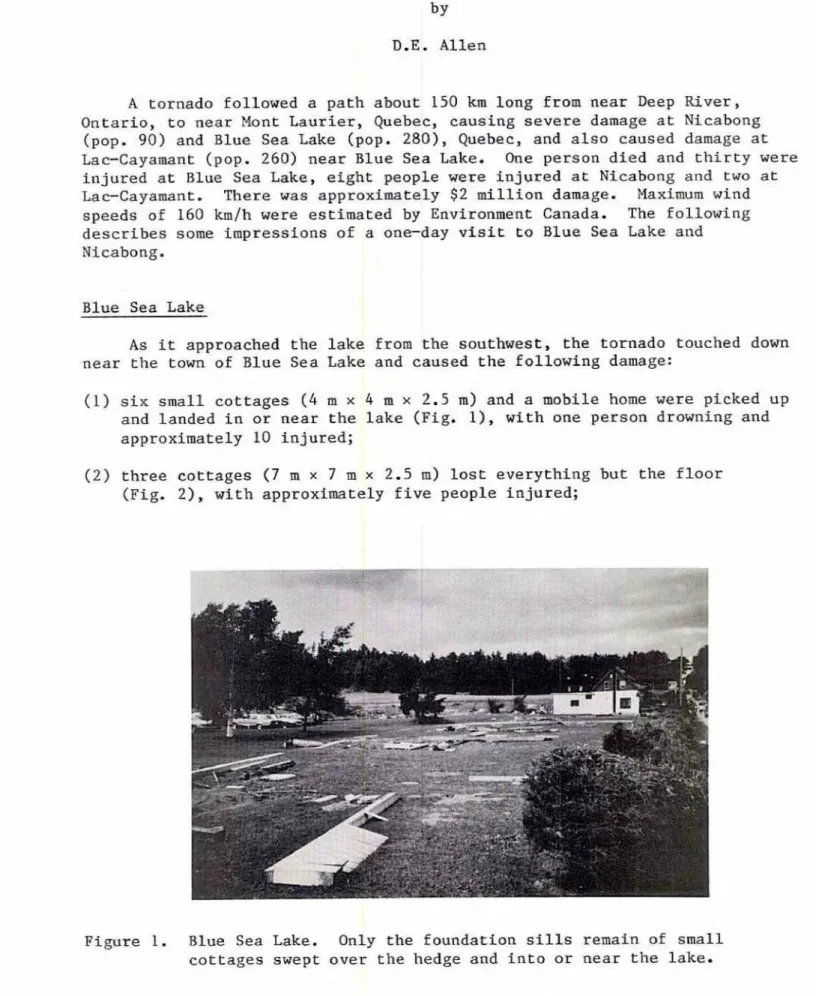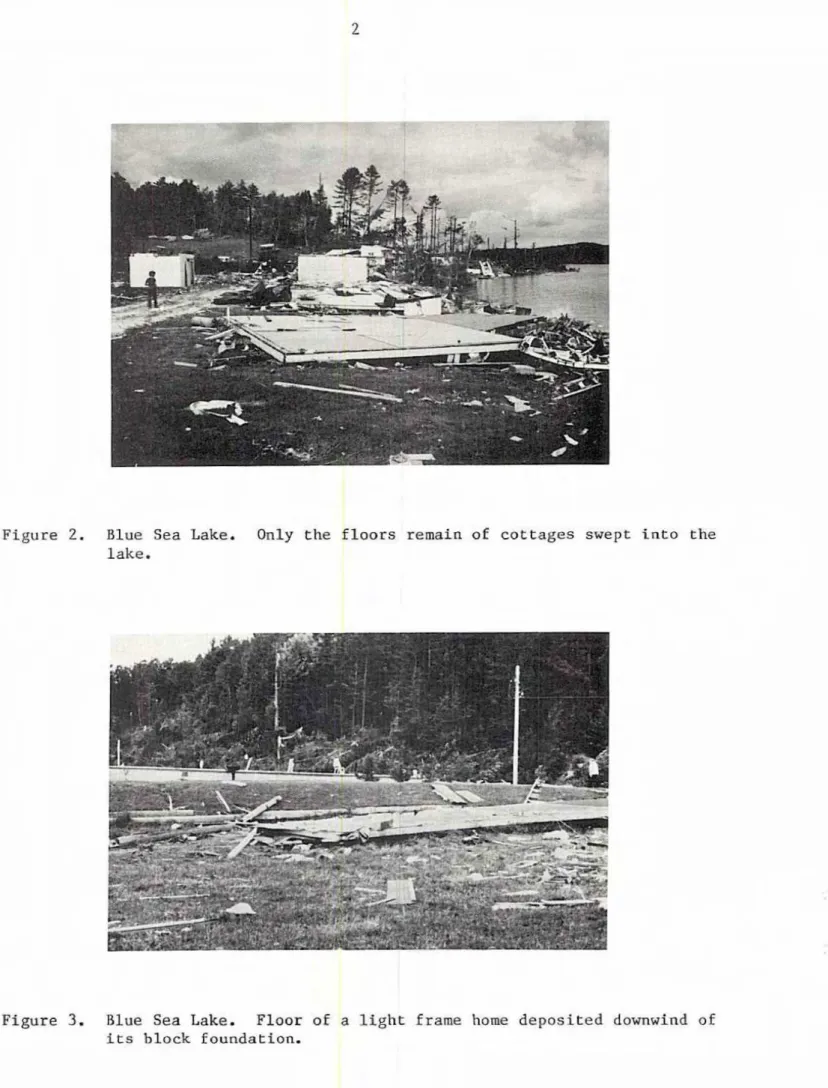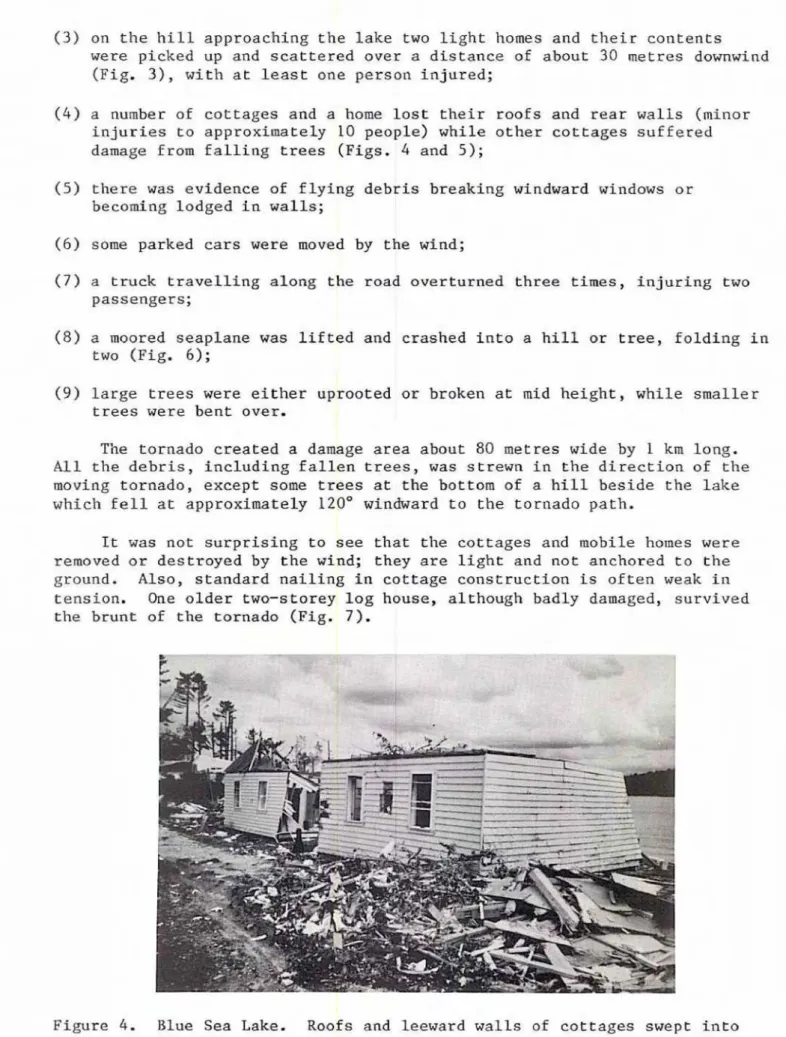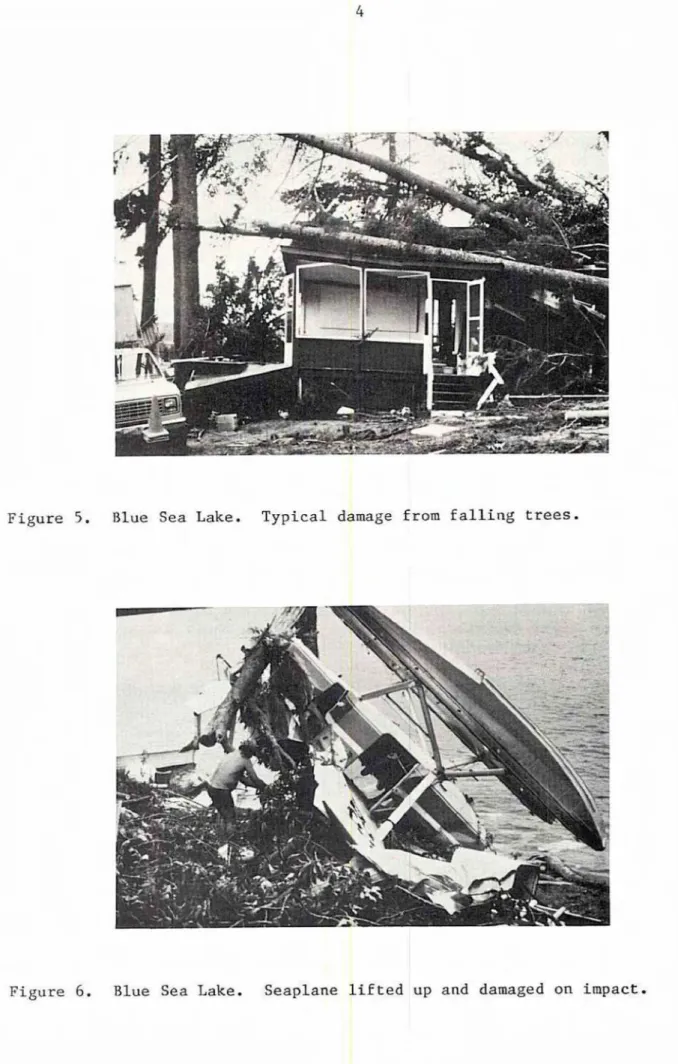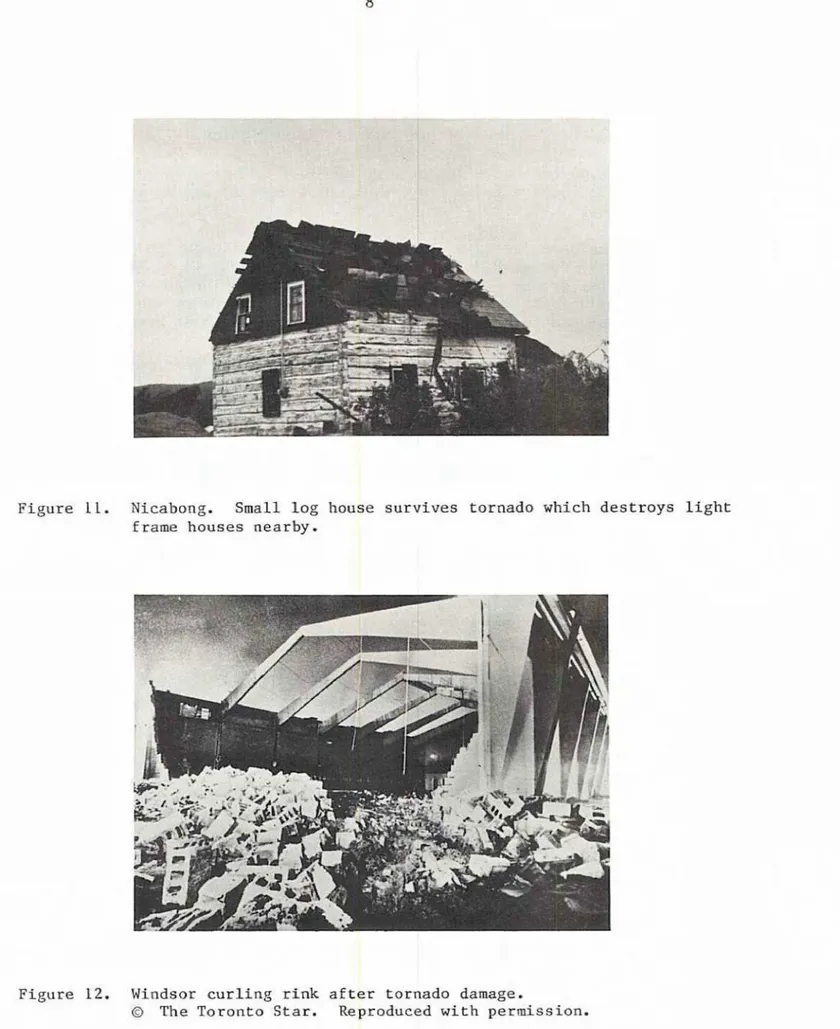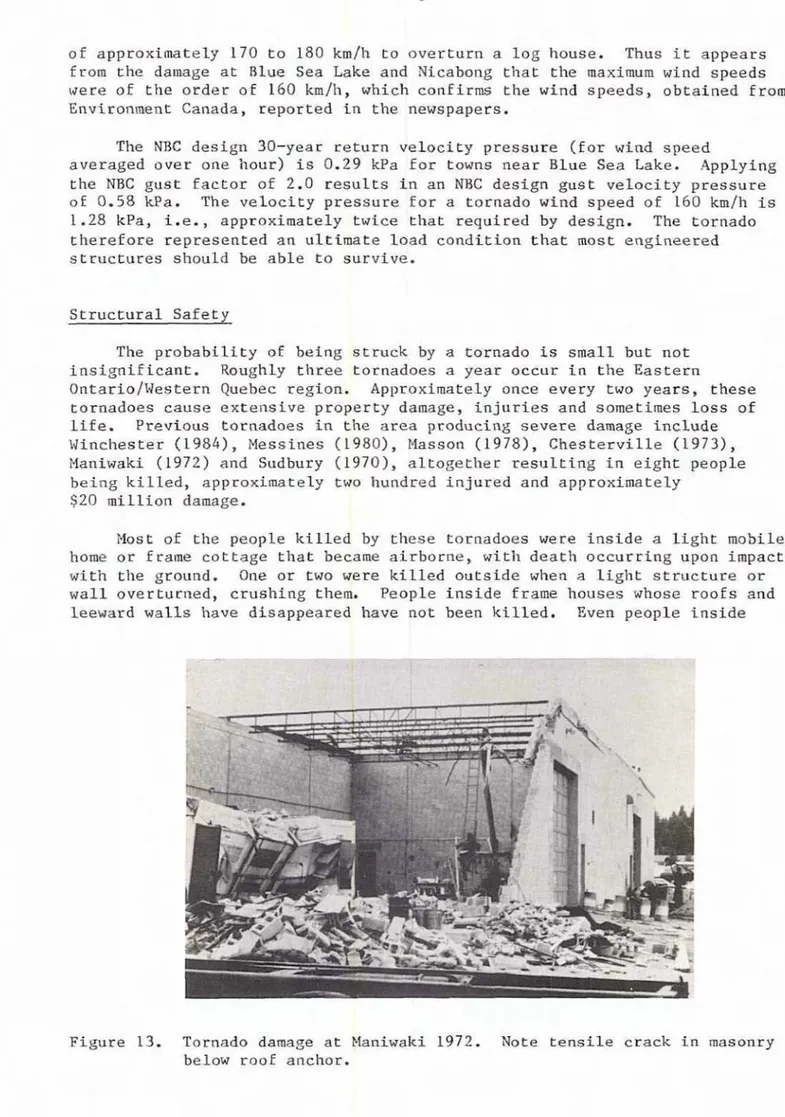Publisher’s version / Version de l'éditeur:
Vous avez des questions? Nous pouvons vous aider. Pour communiquer directement avec un auteur, consultez la
première page de la revue dans laquelle son article a été publié afin de trouver ses coordonnées. Si vous n’arrivez pas à les repérer, communiquez avec nous à PublicationsArchive-ArchivesPublications@nrc-cnrc.gc.ca.
Questions? Contact the NRC Publications Archive team at
PublicationsArchive-ArchivesPublications@nrc-cnrc.gc.ca. If you wish to email the authors directly, please see the first page of the publication for their contact information.
https://publications-cnrc.canada.ca/fra/droits
L’accès à ce site Web et l’utilisation de son contenu sont assujettis aux conditions présentées dans le site LISEZ CES CONDITIONS ATTENTIVEMENT AVANT D’UTILISER CE SITE WEB.
Building Research Note, 1984-11
READ THESE TERMS AND CONDITIONS CAREFULLY BEFORE USING THIS WEBSITE. https://nrc-publications.canada.ca/eng/copyright
NRC Publications Archive Record / Notice des Archives des publications du CNRC :
https://nrc-publications.canada.ca/eng/view/object/?id=6fb913d4-1c66-4d99-bda8-b2c92a930e1a https://publications-cnrc.canada.ca/fra/voir/objet/?id=6fb913d4-1c66-4d99-bda8-b2c92a930e1a
NRC Publications Archive
Archives des publications du CNRC
This publication could be one of several versions: author’s original, accepted manuscript or the publisher’s version. / La version de cette publication peut être l’une des suivantes : la version prépublication de l’auteur, la version acceptée du manuscrit ou la version de l’éditeur.
For the publisher’s version, please access the DOI link below./ Pour consulter la version de l’éditeur, utilisez le lien DOI ci-dessous.
https://doi.org/10.4224/40000493
Access and use of this website and the material on it are subject to the Terms and Conditions set forth at
Tornado damage at Blue Sea Lake and Nicabong, Quebec, July 1984
Allen, D. E.
BUILDING
RESEAL
ZH
NOTE
TOBNAW DAMAGE AT BLOB SEA LAKE
Ab
NICABONG, QUgBEC, JULY 1984 bYD.E- Allen
Division of Building Research, Mational Research Council of Canada
National
Research Conseil nationalI
+
Council Canada derechmhes
CanadaTOWADO D W E AT BLUE SEA LAKE AND NLCMONG, QUEBEC, JULY 1984
by
D.E. Allen
A tornado followed a path about 150 km long from near Deep River,
Ontario, to near Mont Laurier, Quebec, causing severe damage at Nicabong (pop. 9 0 ) and Blue Sea Lake (pop. 2 8 0 ) , Quebec, and also caused damage at
LarCayamant (pop, 2 6 0 ) near Blue Sea Lake. One person died and t h i r t y were
i n j u r e d at Blue Sea Lake, eight people were injured at Nicabong and two at Laccayamant. There w a s approximately $2 million damage. Maximum wind
speeds of 160 kmlh were estimated by Environment Canada. me following
describes some impressions of a one-day v i s i t t o Blue Sea Lake and
Nicabong.
I Blue Sea Lake
As it approached the lake from the southwest, the tornado touched down
near the town of Blue Sea Lake and caused t h e following damage:
( I ) six small cottages (4 m x 4 m x 2.5 m) and a mobile home were pfcked u p
and l a n d e d in or near the lake (Fig.. I ) , with one person drowning and approximately 10 injured;
(2) three cottages (7 m x 7 m x 2.5 m) lost everything but the floor { F i g .
Z),
w i t h approximately five people injured;Figure 1. Blue Sea Lake. Only the foundatZoa s i l l s remain of small
I,I,
Figure 2. Blue Sea Lake. Only
'the
oors remain of cat tages swept I n t o thelake.
Ill
1
F i g u r e - 3. Blue Sea Lake. Floor of a light fta* home d e p o - s i t e d 'downwind sf
(3) on t h e hill approaching the lake two light homes and their contents
w e r e p5cked up and scattered over a distance o f about 30 metres downwind
(Fig. 3), with ac least one person injured;
( 4 ) a number of cottages and a home l o s t their r00f.s and rear walls (minor
i n j u r i e s to approximately 10 people) while other cottages suffered
damage f r o m falling trees (Figs, 4 and 5);
(5) there was evidenc.e of f l y i n g debris breaking windward windows or
becoming lodged l a walls;
( 6 ) some parked cars were moved by t h e wind;
( 7 ) a truck travelling along the road overturned three times, injuring t w o
passengers;
( 8 ) a moored seaplane was l i f t e d and crashed into a hill or tree, folding in
two (Fig. 6 ) ;
( 9 ) large trees were either uprooted or broken at mid height, while smaller
trees w e r e bent aver.
The tornado created a damage area about 80 metres w i d e by 1 km l o n g .
A l l t h e d e b r i s , i n c l u d i n g f a l l e n trees, w a s strewn in the directian of the moving tornado, e x c e p t same trees at the bottom of a hill beside the lake which fell at approximately 120" windward to the tornado path.
It was not surprising to see t h a t the cottages and mobile homes were
removed or destroyed by the wind; they are l i g h t and n o t anchored to the ground, Also, standard nailing in cottage construction is often weak in
tension. One o l d e r two-storey l o g house, although badly damaged, survived
the brunt a£ th& tornado (Pig, 7 ) .
Figure 4. ELue Sea Lake. Roofs and leeward walls of cottages swept i n t o
Figure 5. Blue Sea Lake. T y p i c a l damage from f a l l l n g trees-
Figure 6 . B l u e Sea Lake, Seaplane lifted up and damaged on impact.
I
I
What is surprising, however, is that there were not more p e o p l e
k i l l e d or seriously injured in t h e 12 buildings that either flew off or were
completely destroyed. Approximately 25 p e o p l e were i n these b u i l d i n g s when
the tornado struck. Only one died and that was from drowning, a few
suffered severe ( e - g . s p i n a l ) injuries, but most of the remainder suffered only broken bones and cuts, Apparently the woman who died w a s s w e p t away when the roof of t h e cottage took o f f and landed in the lake 25 metres away,
whereas her husband was carried i n t o the lake by the cottage flaor. In
another case, people l y i n g an the f laor ended up in the lake. In a t h i r d case the family lay an the floor while nearly all of the house and i r s
c o n t e n t s flew away. It is difficult to find out exactly what happened because most p e o p l e were ubconscious during t h e Incident.
Nicabong
The tornado approached from the west p a r a l l e l t o the road and touched down in the small v i l l a g e of Nicabong and caused the following damage:
1) the wood roof of a small church (about eight metres w f d e , 20 metres long
and three metres high) was lifted off and 200 mm block walls c o l l a p s e d ,
with only framed s m a l l rooms and the concrete foundation rema5ning (Fig.
8).
The roof landed u p s i d e down aheut 10 metres downwind. Theroof d i d not: appear to be anchored t o the wall. (This was not checked because visitors were forbidden to enter the immediate area.)
( 2 ) approxitnately thtee small light frame houses were s w e p t off their
foundations, with only the floors remaining ( F i g . 9);
F i g u r e 7. Blue Sea Lake. Two-storey log house survives tornado which
F i g u r e 8. Nicabang. Block wall of church collapsed inwards after roof l i f t e d o f f ,
F i g u r e 9. Nicabong. Only the f l o o r remains of a light: frame house d e s t coyed by the tornado.
( 3 ) a garage facing t h e tornado collapsed sideways, while t h e adjacent
home w a s not damaged (!Fig. 10);
( 4 ) a number of frees were b l o w over in t h e direction af the moving tornado
while some larger ones were broken off a t mid-height.
The tornado created a damage area about 30 metres wide by 1 km long.
A l l t h e d e b r i s , except f o r a f e w t r e e s , was strewn in t h e direction of the
moving tornado.
As in the case of t h e Blue Sea Lake damage, Lhe homes and garage that
were removed by the wtnd were l i g h t and not well anchored t o the floors nar
anchored to the ground. Two log houses withstood the brunt of the tornado
[ F i g . 11) and a frame s c h o o l down the road from the church w a s undamaged, apparently because the tornado was only beginning to touch down there.
E i g h t people were injured at: Nicabong, none seriously. Fa-rrunately
there were no people in t h e main hall a £ the church (one person in another
part of the church w a s injured). If the tornado
had
struck later that evening, when mare than 100 people were e x p e c t e d , a number of thgse peoplewould have d i e d or been seriously injured when the windward bla.ck wall
c o l l a p s e d inwards (see Fig, 8).
Estimated Maximum Wind Speeds
It is useful to estimate wind s p e e d s reqaircd to overtdrn an unanchored cottage, m o b i l e home or camper or lift o f f a roof with very l i t t l e anchorage
t o the walls. Calculations given in t h e Appendix 5ndicate that the
necessary wind speeds range from 85 km/h to overturn a carnper to 130 km/h to
overturn a cottage or blow o f f a roof, whereas it would require wind s p e e d s
F i g u r e 10. Nicabong, Garage facing wind collapsed sideways; tarnado less
Figure 11. Nicabong. S m a l l log house survives tornado which destroys light frame houses nearby,
F i g u r e 12. Windsor curling rink after tornado damage.
o f approximately 170 to 180 km/h t o overturn a l o g house. Thus it appears
from the damage at Blue Sea Lake and Micabeng thaL the maximum wind speeds
were a f Lhe order of 160 h / h , which codfirms the wind speeds, obtained from Environnment Canada, reported in the newspapers.
The NBC d e s i g n 30-year return velocity pressure ( f o r wind s p e e d
averaged over one Rout) is 0.29 W a for towns near Blue Sea Lake. Applying the N3C gust factor of 2.0 results in an NBC design gust velocity pressure
of 0.58 kPa. The valo.city pressure for a tornado wind speed of 160 km/h is
1.28 kPa, f .e., approximately twice that required by design. The tornado therefore represented an ultimate load condition that most engineered structures should be able t o survive.
Structural S a f e t y
The probability of being struck by a tornado fs small but not insignificant. Roughly three tornadoes a gear occur in the Eastern
Qntario/Western Quebec regTon. Approximately once every t w o years, these
tornadoes cause extensive property damage, i n j u r i e s and sometimes loss of
Life. Previous tornadoes in the area producing severe damage include
Winchester (19841, Messines (1980), Masson (1978), Chesterville (19731, Maniwaki (1472) and Sudbury (1970), altogether resulting in eight people being killed, approximately two hundred injured and a p p r o ~ m a t e l y
$20 million damage.
I I
Most of the p e o p l e k i l l e d by these tornadoes were tnside a light mobile home or frame cottage that became airborne, with death occurring upon impacc
with the ground. One or two qere k i l l e d outside when a light structure or
w a l l overturned, crushing them, People inside frame houses whose roofs and leeward w a l l s have disappeared have not been k i l l e d . Even p e o p l e i n s i d e
Figure 13. Tornado damage at Maniwaki 1972. Note t e n s i l e ' c r a c k in masonry
frame houses which lost everything but the floor survived although a few s u f f e r e d severe i n j u r i e s .
The Blue Sea Lake tornado damage therefore provides additional evidence
to support the requirement in CSA Standard 2240.2-1 that permanent mobile
homes be anchored to the ground. Exposed cottages would appear to be in a
similar category; however, owners are more unlikely t o t 2 e cottages down t o
the same extent as required by CSA for mobile homes. P o s s i b l y less drastic measures than a full-tie system should be used for cottages exposed in t h e westerly direction. For example, emergency planning andlor minimum
anchorage might be considered. P u r t k r studies in this area are i n d i c a t e d .
The collapse of the church in Micabong, however, strongly fndgcates t h e
need f o r improved tie-down requirements in the case of light roofs supported on unreinforced concrete block walls in b u i l d i n g s containing large open
assembly areas. A similar collapse occurred in the 1974 Wfndsor tornado,
when the roof of a c u r l i n g rink l i £ t e d off and the unsugporred block wall collapsed, killing e i g h t p e o p l e inqide (Fig, 12). Previous tornado damage
at Haaiwaki indicates that t y i n g the roof down to the top few courses of
blockwork is not s u f f i c i e n t l y reliable (Fig, 133. Therefore either the ties should extend down through the block wall i n t o the foundation or the wall
wfthout roof support should be designed t o resist NBC wind loads, e.g. by means of lateral supports.
Acknowledgements
The author would l i k e to thank Mr. Roland Mchaud, Directcur, Service
d'iacendie, V i l l e de Hull, for providing information on what happened t o the
people inside the cottages destroyed by the tornado at: Blue Sea Lake. Mr.
Michaud arrived at Blue Sea Lake 10 minutes a f t e r the tornado and d i r e c t e d
emergency measures. He was also surprised that mare people inside the
Appemdlx I Y 5 . d Speeds to Came Uplift or Overturning
Relation Between Wind Velocity (V in km/h) and Velocity Pressure (q in kPa)
Wind Pressure Coefficients (see Fig. 3-6 of Commentary t o C 1977)
These can be approximated as follows:
External Pressure
1 . 0 q
Roof uplift occurs when
Internal Pressure
Assume 2 0,5q d e p e n d i ~ g on whether openings occur
i n the windward wall
(+
0,5 q) or leeward wall(- 0.5 q ) .
Overturning occurs when wind pressure causing overturning moment about point
Estimated Wei~hts
Wood roof cottage
Building and contents camper
:cottage
I
I
:log cabin ' l o g house (2-storey)I
I
4 h--. . - --A-wind speeds to cause 800f u p l i f t ,
Zin.
(2)Wroof "anchor
kPa kPa
cottage church
Wind Speeds to Cause Overturning, Eqn, ( 3 )
camper
cottage
log cabin log house
